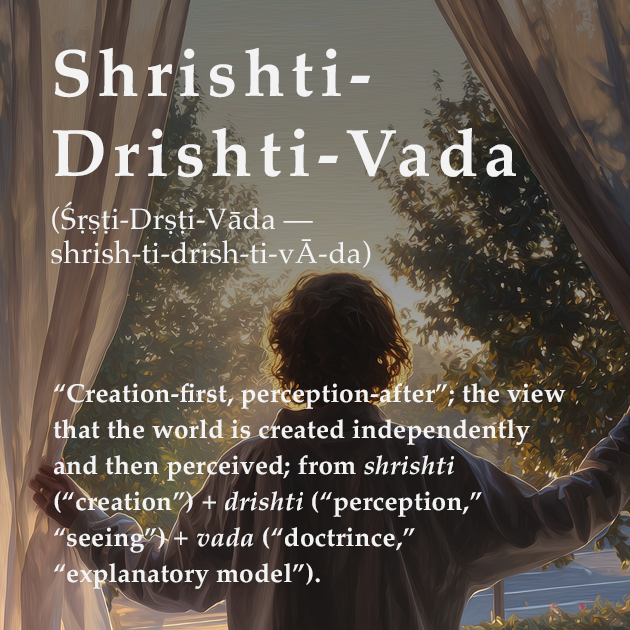Shrishti-Drishti-Vada - The “Creation-First” Teaching Model
- Daniel McKenzie

- Sep 12
- 2 min read
Updated: 6 days ago

Vedanta uses different vadas (doctrines or explanatory models) to guide the seeker. Shrishti-Drishti-Vada (Śṛṣṭi-Drṣṭi-Vāda) literally means “creation-first, perception-after.” It is the common-sense view that the world is created first and then experienced by the individual. This is the standpoint adopted in most of the Upanishads and in the early stages of teaching, because it aligns with our ordinary perception: first there is a universe, then we are born into it to experience pleasure and pain.
According to this model, Ishvara (God) creates the jagat (world) as an orderly manifestation of maya, and individual jivas enter this creation to work out their karmas. This framework preserves the transactional world (vyavaharika-satta) and explains dharma, karma, rebirth, and the role of the Veda. It also affirms Ishvara as the intelligent and material cause of the cosmos.
However, Advaita Vedanta eventually shifts beyond this standpoint. At a more advanced level, Drishti-Shrishti-Vada (“perception-first, creation-after”) is introduced, pointing out that the world we know is inseparable from perception. Ultimately, both models are provisional; the final vision is Ajati-Vada (Gaudapada’s teaching), that in truth no creation ever took place — only Brahman is.
Thus, Shrishti-Drishti-Vada is a skillful teaching device. It begins where the student stands, affirming the reality of the world and its order. From there, inquiry gradually refines the vision until even the idea of creation is resolved into non-dual awareness.
Root & Meaning
Shrishti = creation
Drishti = perception, seeing
Vada = doctrine, explanatory model
Shrishti-Drishti-Vada = “creation-first, perception-after” — the view that the world is created independently and then perceived.
Scriptural References
Chandogya Upanishad (6.2.3): “From that Being, existence, this entire world arose.”
Taittiriya Upanishad (3.1): cosmological description of creation from Brahman.
Bhagavad Gita (9.10): “Under Me, as the supervisor, prakriti produces all moving and unmoving beings.”
Traditional View
Used as the initial teaching in Advaita Vedanta.
Explains karma, rebirth, dharma, and Ishvara's role as creator.
Holds transactional validity (vyavaharika-satta), not ultimate reality.
Vedantic Analysis
Common Misunderstandings
That Shrishti-Drishti-Vada is the final teaching: Advaita accepts it only provisionally.
That it implies dualistic creation separate from Brahman: Creation is maya's manifestation, non-separate from Brahman.
That creation is “real” in the absolute sense: Vedanta clarifies it is mithya — dependent reality.
Vedantic Resolution
Shrishti-Drishti-Vada is an introductory model. It preserves the reality of world and dharma at the transactional level, while paving the way to subtler insights that culminate in non-dual vision: there was never any creation apart from Brahman.
